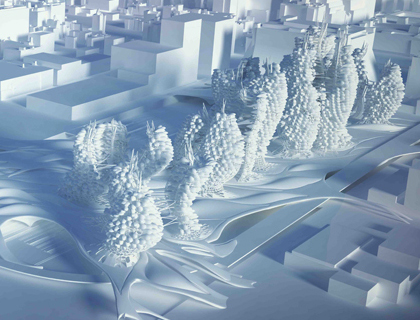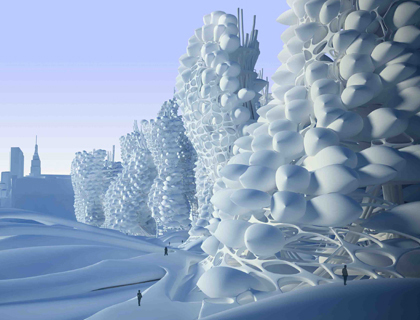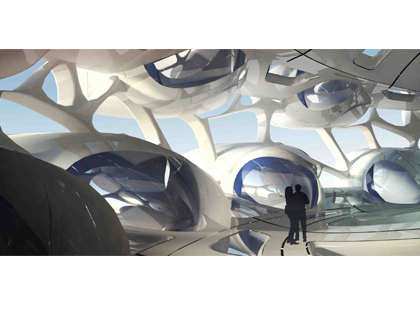By: admin | August - 9 - 2011

New York-based architects Chimera unveiled a proposal for a new skyscraper in Manhattan that explores the emergent logics of adaptation and evolution that are constitutive of ecosystems in nature. The architects’ vision is to define an urban ecosystem which supports housing and cultural programs and has the ability to adapt, transform, mutate, and adjust according to the specific urban and social character of the site. This urban ecological system is taking as a model an organism in nature, specifically the mangrove plant. The mangrove plant and its collective the mangal, provide examples of social associative principles as well as structural capacities and hybrid responses to environmental and contextual conditions.
The project deals both with the complex topography of the site and its connectivity to the Manhattan. The new ground has been defined by creating an elevated plateau generated by the potential directionality of human fluxes on the site. This oriented space is being partitioned following a logic of cellular aggregation, embedding neighbouring relationships at different scales, and is also the ground reference of the urban housing massing negotiation. Models from nature such as phyllotaxis and branching have been our driving paradigms to define a parametric machine which is able to create a responsive urban ecology.




No comments:
Post a Comment